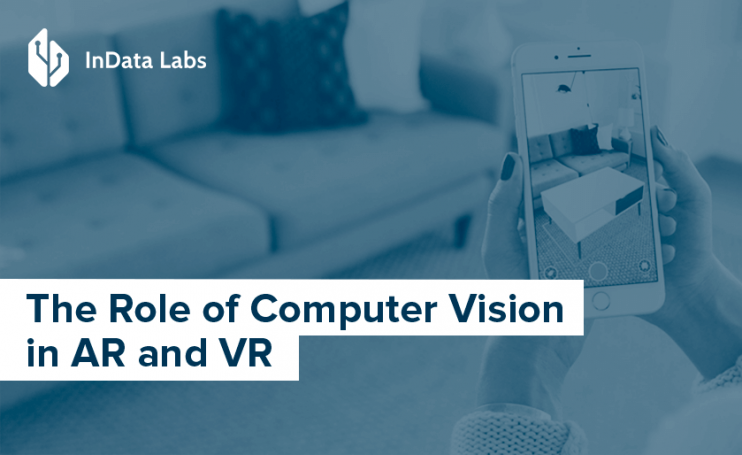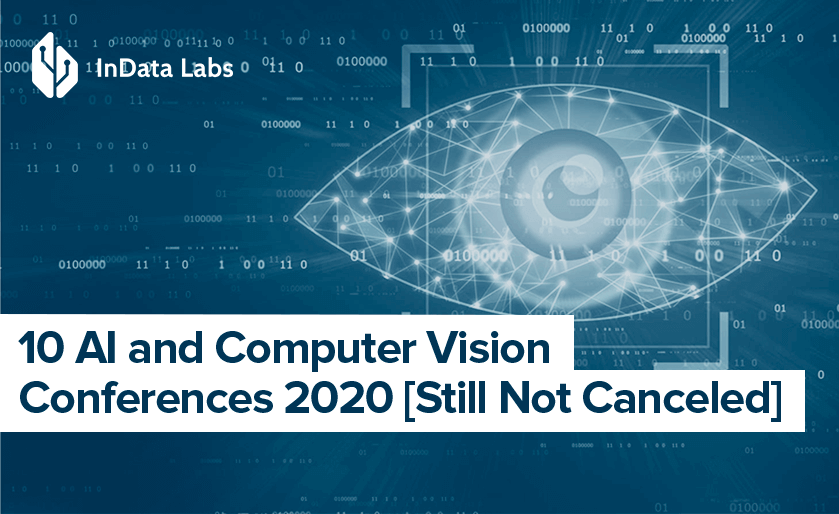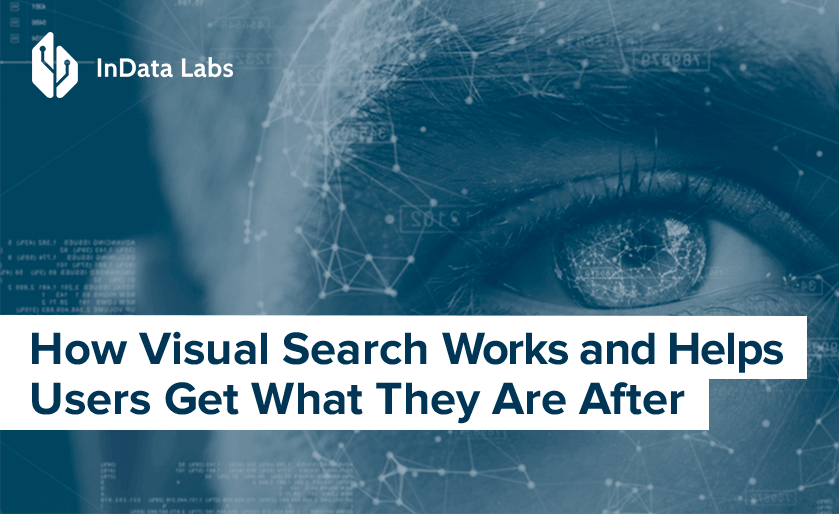As AR and VR have expanded reach to almost every industry, ranging from travel and healthcare to gaming and eCommerce, new business opportunities are sprouting up. According to Market Watch, the global Augmented & Virtual Reality Industry is further estimated to grow at a CAGR of 54.91% from 2018 to reach USD 409.99 Billion by the year 2025. Share on X
Augmented reality (AR) is a huge hit for all the industries, whereas virtual reality (VR), created by gamers for gamers, is limited to gaming and entertainment. Even though technologies serve different audiences, they are both key trends to watch out for in the next few years.
In this article, InData Labs, a computer vision technology provider, will give you a broad overview of what computer vision means to AR and VR. Learn about the current use cases for AR/VR in various niches and how using technology can benefit your business.
AR, VR, And What CV Means to Them
VR immerses a person into a virtual world stimulating their real presence through senses. This stimulation can be achieved through a source of content and hardware like headsets, treadmills, gloves and so on. Computer vision aids virtual reality with robust vision capabilities like SLAM (simultaneous localization and mapping), SfM (structure from motion), user body tracking and gaze tracking.
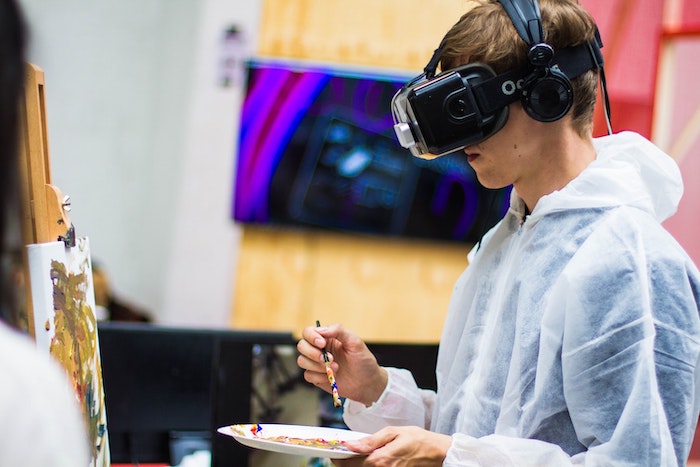
Source: Unsplash
Using cameras and sensors, these functions help VR systems analyze the user’s environment and detect the headset’s location. So, computer vision and virtual reality work together to make products more sophisticated and user-responsive.
You can read one of our our previous articles to delve into some more details on how computer vision works.
Augmented reality has the potential to instill awe in us by converging the physical and real worlds. In reality, computer vision-based AR overlays imagery or audio onto the existing real-world scenery. And it all begins with computer vision. Computer vision (CV) for augmented reality enables computers to obtain, process, analyze and understand digital videos and images. By looking at an object and its appearance, location, and the settings, it identifies what the object is. More simply, this is how Instagram recognizes your friends by photo tags, how you can log in into your bank account with your eyes, and how you can get yourself a flower crown on Snapchat.
Take Snapchat filters. When you look at photos, you see your face, while computer vision sees data. Machine learning, a method of data analysis, incorporated in an AR app soothes the pain of object detection. CV, in turn, maps facial features from photos or videos. It reads the geometry of your face, captures facial landmarks and also takes into account the universal truths about the human face such as asymmetric features, mimic facial muscles, etc.

Source: Systweak
To unpack a predefined AR content (be it a deer face or hearts around the head), you should get an accurate face scan. In this case, computer vision enables AR image processing, optical tracking, and scene reconstruction, which is vital for any immersive app. Next, a computer vision-based AR system scans your photo with sensors to add the real-time visual effects to your face. It all brings up the mix of the physical world and AR data.
In fact, computer vision goes above and beyond working closely with AR and VR to provide the users with sophisticated interactive content.
How AR and VR Benefit Businesses in 2020
From theory to reality, AR and VR have become mainstream technologies paving the way towards mass adoption in various industries. Obviously, both technologies are at the forefront of innovation and aren’t going anywhere.
Computer Vision and Augmented Reality for E-Commerce
Recently, AR has made it possible for retailers to showcase their products in real-time. IKEA was one of the first to roll out an AR application that enabled buyers to visualize products within their homes. Today, more and more retailers are utilizing AI software to elevate the shopping experience and ease purchasing decisions for their clients.
The same goes for online clothing stores. The technology enables shoppers to virtually try on clothes and find their perfect fit. Nowadays, the number of online stores unveiling their fitting rooms by an app is growing. For now, computer vision-based augmented reality has been proven efficient in providing a better customer experience, improving brand perception and boosting sales.
AI Augmented Reality For Education
When it comes to education, AR and VR are total game-changers. They have the potential to improve the learning process and better motivate and engage students. More importantly, the technologies have proven to be successful in real-time training. When theory fails to improve the recall, virtual reality AI comes to the rescue. Thanks to this, students have a range of VR tutorials and modeling sessions where they can obtain hands-on experience and polish up their techniques.

Source: Shutterstock
Machine Learning-Based VR for Gaming
Virtual reality is evolving at breakneck speed. And some of the latest VR breakthroughs haven’t been possible without machine learning and computer vision.
According to Grand View Research, the global virtual reality in gaming market size is expected to reach USD 45.09 billion by 2025. Lately, virtual reality powered by computer vision has given a brand new twist to the video game industry. There’s a number of benefits VR has to offer for the gaming business:
- significant increase in sales
- enhanced user experience
- improved player retention
AI-Powered Augmented Reality for Travel and Tourism
The technology has been actively utilized by travel agencies and hotels to better the overall brand reputation and boost revenue. Within the hospitality and tourism industry, augmented reality fueled by computer vision acts as a powerful tool to bring more interaction into hotels and resorts and convince travelers into impulse booking.
On top of that, some travel agencies develop AR apps that offer breathtaking immersive tours. The ultimate goal of those apps is to take the potential traveler on an interactive tour somewhere sunny and give them the most of the information about the destination. For sophisticated travelers, there’s an opportunity to get a unique view of a sight or a resort from the drone. Thanks to AR drone image processing, tourism agencies are now reaping the benefits of drone technology and promoting tourist destinations.
VR and AR for Healthcare
These days, AR is making a significant contribution to the healthcare industry. The innovation empowers healthcare professionals to provide better diagnosis and make surgery safer. Using AI coupled with computer vision and AR, surgeons can now place surgical incisions more precisely and prevent tissue damage.
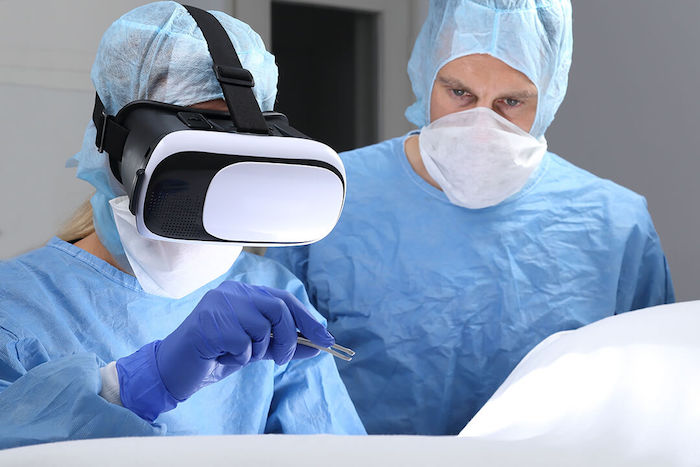
Source: Shutterstock
Moreover, computer-vision based virtual reality is the next big thing for mental health and psychotherapy. It’s utilized to treat patients with post-traumatic stress disorders (PTSD), depression, anxiety, and other mental-related issues.
Wrapping Up
Thanks to AR and VR, we have an opportunity to blur the line between the world and reality. Both technologies are promising, and are here to stay. Since computer vision is the fuel behind most AR and VR applications, in the next coming years, we’ll see the three of them working closely together.
Build Your Computer Vision Models with InData Labs
Have a project in mind but need some help implementing it? Drop us a line at info@indatalabs.com, we’d love to discuss how we can work with you.
